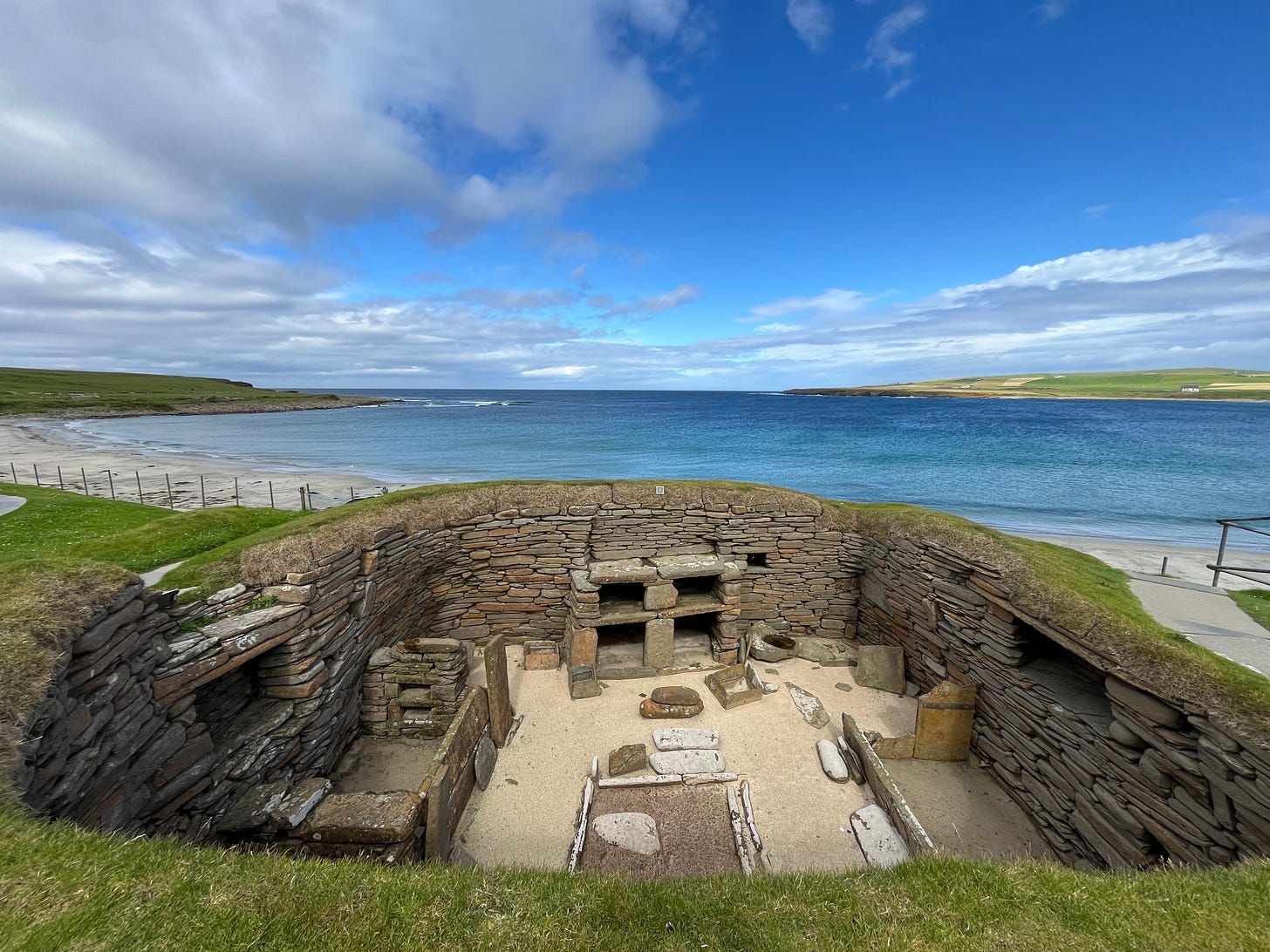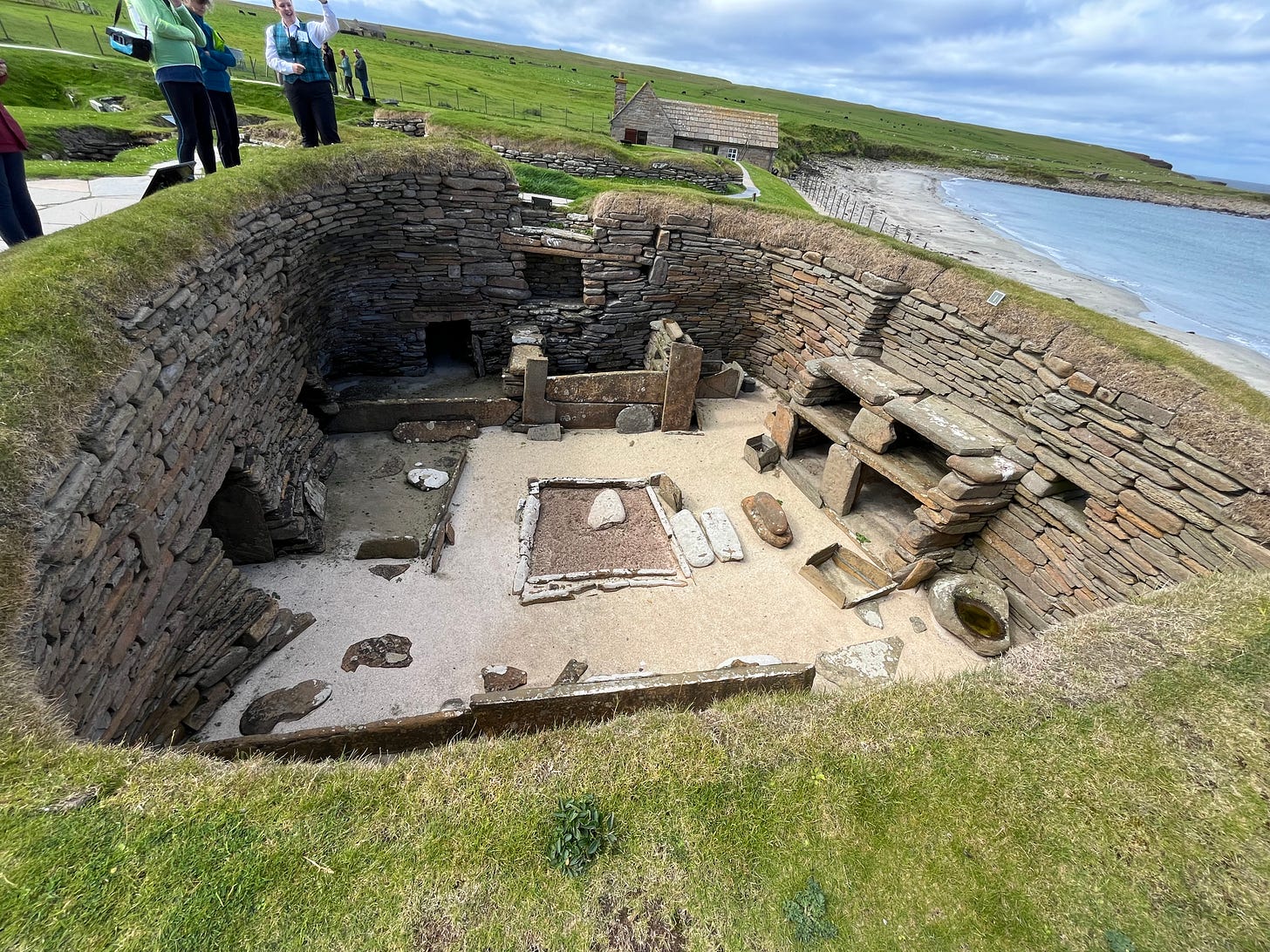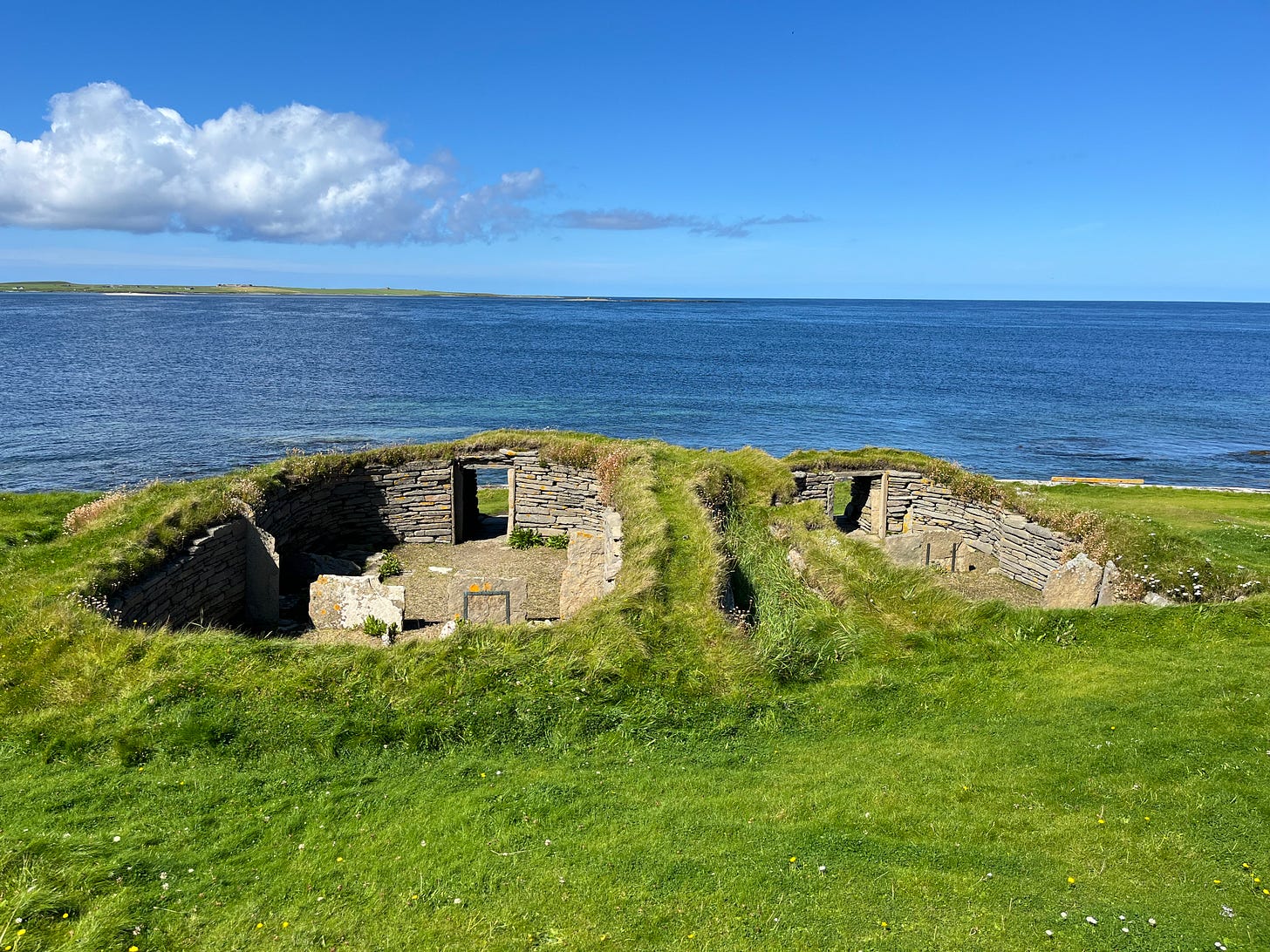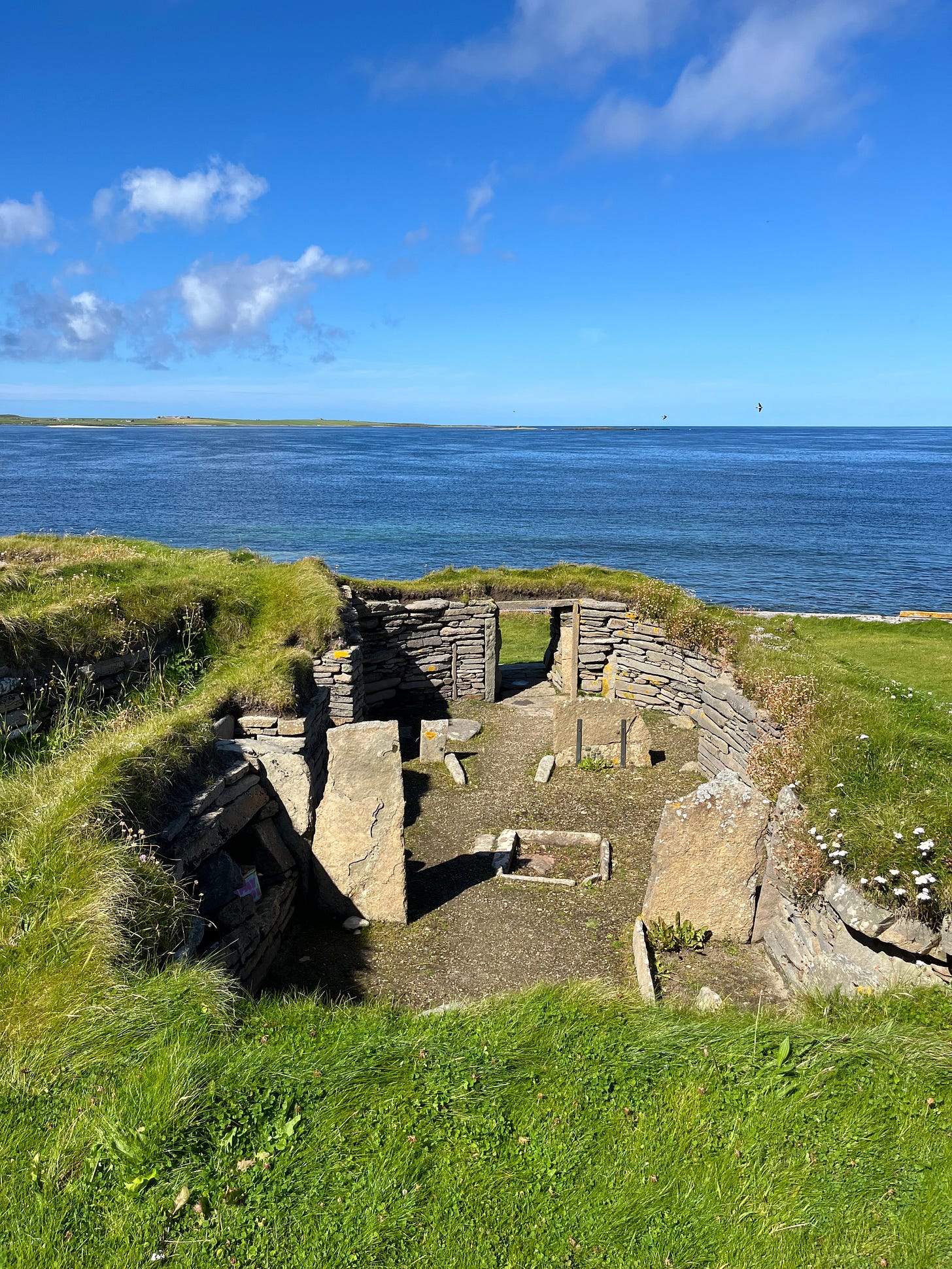Skara Brae on mainland Orkney, is arguably the most famous surviving dwelling places of our Neolithic ancestors and part of the ‘heart of Orkney’ UNESCO world heritage site.
It was built in 3180 BCE making it over five thousand years old. It is older than the Pyramids.
Consisting of approximately ten stone built dwellings with earthen dams between. The homes include beds, possibly cupboards, and the well known stone dressers found in several buildings, but primarily in house one.
The story behind its chance discovery is of note; after a severe storm in 1850 which caused significant damage and killed many people, the irregular knoll was stripped of soil and William Watt, the son of the local landowner, mounted an amateur excavation. After four houses were uncovered, Watt abandoned the dig, and it remained like that until another storm in 1924 swept away significant parts. It was only then, that the site was deemed necessary to properly investigate and secure by the University of Edinburgh.
Today, Skara Brae is accessible to visit through Historic Scotland, and visitors can walk around on a platformed path which looks down on the dwellings. The first and most obvious thing that I noticed upon viewing the houses was how small each separate dwelling is. It’s hard to guess how many people would have lived in each one, modern accommodation, even the humble bedsit seems palatial in comparison to these tiny one room homes. It is clear from the these remains that our ancestors were comfortable; warm in winter with the central hearth, and well fed with evidence of bones and shellfish recovered in the midden (rubbish dump) which, ingeniously doubled as insulation. Several of the buildings appear to have been workshops, for the production of food with barley grains and quern stones suggesting bread making, along with possibly pottery or knapping.
We were fortunate to be able to visit Papay (or Papa Westray,) around the visit to Skara Brae and had the chance to see the farmstead, known as the Knapp of Howar. This site is the oldest domestic settlement in Northern Europe and was occupied from 3700 BCE. Two farmsteads remain, (there were probably more but these have been washed away,) - both the remaining ones are intimate in size and very similar in design to their more famous cousin.
As with Skara Brae, it now sits on the edge of the sea, its remoteness, however is striking, on the edge of a precipice, completely isolated.
Life must have been hard, the community must have been everything to these hardy souls. There are many who have romantic notions about how idyllic life must have been, with no technology and the 9-5 existence, and possibly the is some merit to imagining a life without virtual tech; but standing inside these windswept stone homes only made me count my blessings. How fortunate that we don’t have to live hand to mouth, that I can turn on a tap and get hot water, that I have a good pair of shoes…
Could it be, though, that this same remoteness is the reason these crucial sites still exist today?











